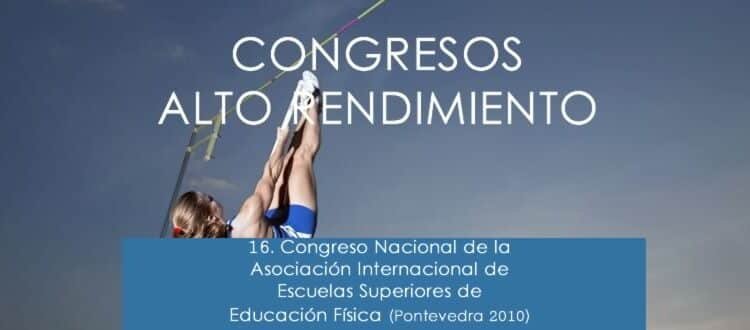New technologies for education: motivational and cognitive benefits for pupils in a physical education setting
New technologies for education: motivational and cognitive benefits for pupils in a physical education setting
Introduction
For the last ten years, the multimedia technologies explosion changed the daily life of children and teenagers. Today, taking into account this reality invites teachers to consider New Technologies for Education (NTE) with regard to traditional tools they regularly use for teaching. On the one hand, children’s familiarity with wealthy informational world suggests that NTE might contribute to fulfil basic human psychological needs for autonomy, competence and relatedness which, in turn, lead to selfdetermined motivation (Deci & Ryan, 1985). On the other hand, because they give access to dynamic references with regard to motor skills for instance, NTE would be viewed as relevant tools fostering exploration and instruction especially in physical education (PE; Carroll & Bandura, 1990). However, few studies have tested such assumptions. The purpose of this study was thus to examine the effects of NTE use on children’s psychological need satisfaction, self-determined motivation, and cognitive competence to observe a peer-model and to suggest advices in order to improve performance.
Method
Participants. 54 pupils, 27 boys and 27 girls (M = 12.5 years) studying in the same school voluntary participated to this experiment in gymnastics. Procedure and measures. Pupils were randomly assigned to a NTE vs. traditional condition in order to practice exercises during six 2-hour PE lessons. NTE participants could use video camera, pocket computer and interactive blackboard whereas participants in the traditional condition had at their disposal colour sheets of paper with diagrams and instructions for each exercise. The experiment comprised 3 phases. During the pre-test, participants realized motor tests on four gymnastics stations dedicated to assess basic abilities (tone, coordination, arms explosive strength and balance) and completed 3 questionnaires dedicated to: (a) the place of different new technologies at home, (b) participants’ need satisfaction in PE (i.e., autonomy, competence and relatedness) through an overall index of need fulfilment which aggregates across the three needs (Gillet, Rosnet, & Vallerand, 2008), and (c) participants’ perceptions of autonomy support provided by their teachers (Gillet, Vallerand, Paty, Gobancé, & Berjot, 2010).
During the training period, participants were trained to use the tools placed at their disposal and practiced gymnastics in small groups on four apparatus (floor, parallel bars, balance beam, and vaulting horse). During the post-test, participants completed questionnaires to assess psychological need satisfaction (Gillet et al., 2008) and motivation for physical education (Sarrazin, Tessier, Chanal, Boiché, Chalabaev, & Trouilloud, 2007). The self-determination index was used to evaluate the level of children’s self-determined motivation. Finally, participants observed twice a peer model on five videotaped gymnastics exercises to: (a) indicate the parts of the body they judged in a wrong position and (b) suggest corrections to improve the peer model’s execution.
Results
Statistic analyses on the questionnaire assessing participants’ familiarity with different new technologies did not reveal any difference between the two groups, F(1, 52) = 0.75, p = 0.39. The hypothesized model was tested using structural equation modelling with maximum likelihood estimation (Figure 1). A dummy variable reflecting the experimental conditions (NTE +1 vs. traditional – 1) was included in the model as a predictor of psychological need satisfaction at the post-test. The results of the structural equation modelling analysis revealed that the hypothesized model fit the data well: ?2 (df = 11, N = 54) = 8.43, p = .67, CFI = 1.00, GFI = .96, NFI = .95, and RMSEA = .00. As shown in Figure 1, all estimated paths were significant and supported the hypothesized model. Psychological need satisfaction at the post-test was significantly predicted by the experimental condition (? = .39), psychological need satisfaction at the pre-test (? = .37), pre-test performance (? = .30), and autonomy support (? = .23). Then, psychological need satisfaction at the post-test had a positive influence on self-determined motivation (ß = .63). Finally, cognitive competence was predicted both by the experimental condition (? = .43) and self-determined motivation (ß = .38).
Conclusion
Participants in the NTE condition obtained cognitive and motivational benefits in comparison to participants who used traditional tools for learning. These results are in line with postulates from social learning theory (Carroll & Bandura, 1990) and self-determination theory (Deci & Ryan, 1985).
Figure 1. Results from the Path Analysis
FIgure 1. New technologies for education: motivational and cognitive benefits for pupils in a physical education setting
REFERENCES
Carroll, W. R., & Bandura, A. (1990). Representational guidance of action production in observational learning: A causal analysis. Journal of Motor Behavior, 22, 85-97.
Deci, E. L., & Ryan, R. M. (1985). Intrinsic motivation and self-determination in human behavior. New York: Plenum.
Gillet, N., Rosnet, E., & Vallerand, R. J. (2008). Développement d’une échelle de satisfaction des besoins fondamentaux en contexte sportif. Revue Canadienne des Sciences du Comportement, 40, 230-237.
Gillet, N., Vallerand, R. J., Paty, E., Gobancé, L., & Berjot, S. (2010). French validation and adaptation of the Perceived Autonomy Support Scale for Exercise Settings to the sport context. International Journal of Sport and Exercise Psychology, 8, 117-128.
Sarrazin, P., Tessier, D., Chanal, J., Boiché, J., Chalabaev, A., & Trouilloud, D. (2007). Construction et validation de l’échelle de motivation en éducation physique (EMEP). Unpublished manuscript, Université J. Fourier, Grenoble I, France.






